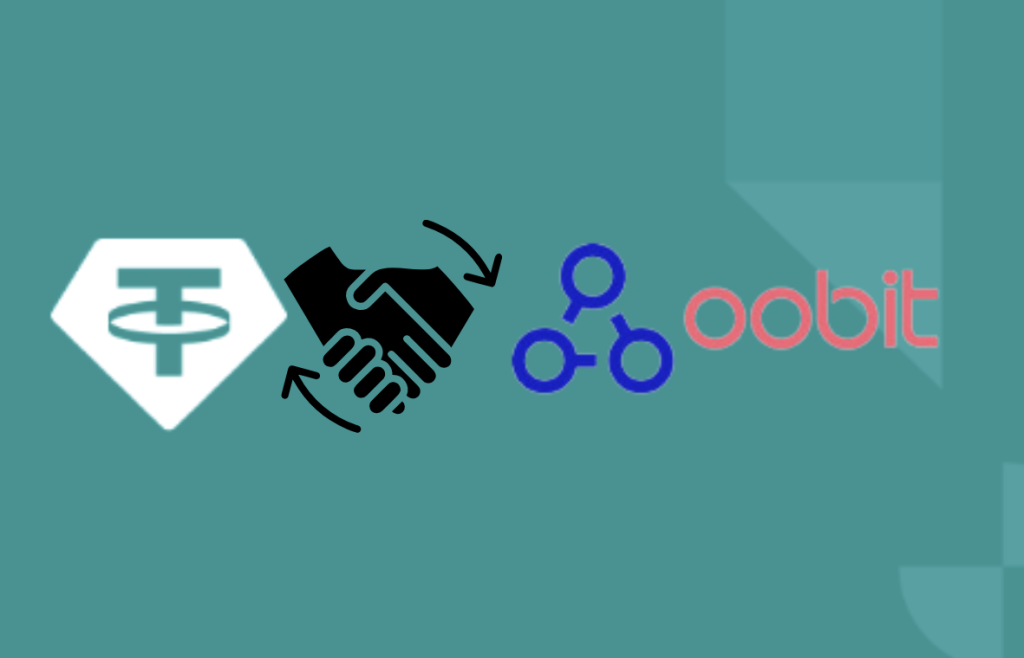 Backend Development
Backend Development PHP Tutorial
PHP Tutorial Using the Java Security API: A Practical Guide to Encryption and Decryption Techniques
Using the Java Security API: A Practical Guide to Encryption and Decryption TechniquesUsing Java Security API: A Practical Guide to Encryption and Decryption Techniques
1. Introduction
In today’s digital age, the security and confidentiality of data are crucial for individuals and organizations important. To ensure data security, encryption and decryption technologies are widely used. As a widely used programming language, Java provides a powerful security API library that can help developers implement data encryption and decryption. This article will introduce how to use Java security API to encrypt and decrypt data, and how to protect the security of data in practice.
2. Basic knowledge of encryption and decryption
Before we understand the Java security API in depth, we need to understand some basic encryption and decryption concepts. Encryption is the conversion of data into an unreadable form to prevent unauthorized access. Decryption is the restoration of encrypted data to its original readable form. Common encryption algorithms include symmetric encryption and asymmetric encryption. Symmetric encryption uses the same key for encryption and decryption, while asymmetric encryption uses a pair of keys, including a public key and a private key. The public key is used to encrypt data and the private key is used to decrypt data. The Java Security API provides implementations of various encryption and decryption algorithms.
3. Use Java Security API for symmetric encryption
Symmetric encryption is a common encryption technology. Commonly used symmetric encryption algorithms include DES, AES, and DESede. The following are the steps for symmetric encryption using the Java Security API:
3.1. Generate a key
First, you need to generate a key as the key for encryption and decryption. Java can use the KeyGenerator class to generate keys, for example:
KeyGenerator keyGen = KeyGenerator.getInstance("AES");
SecretKey secretKey = keyGen.generateKey();3.2. Create a cipher
Next, you need to create a cipher to perform encryption and decryption operations. Java provides the Cipher class to support various encryption and decryption algorithms, such as:
Cipher cipher = Cipher.getInstance("AES");3.3. Initialize the cipher
Before encrypting or decrypting data, you need to initialize the cipher and specify The mode and key for encryption or decryption.
cipher.init(Cipher.ENCRYPT_MODE, secretKey);
3.4. Encrypting and decrypting data
Once the cipher initialization is completed, it can be used to encrypt and decrypt data. The following is an example:
byte[] encryptedData = cipher.doFinal(plainText.getBytes());
4. Use Java Security API for asymmetric encryption
Asymmetric encryption is a more secure encryption technology. Common asymmetric encryption algorithms include RSA and DSA . The following are the steps for asymmetric encryption using the Java Security API:
4.1. Generate a key pair
First you need to generate a pair of keys, including a public key and a private key. Java can use the KeyPairGenerator class to generate a key pair, for example:
KeyPairGenerator keyGen = KeyPairGenerator.getInstance("RSA");
KeyPair keyPair = keyGen.generateKeyPair();4.2. Create a cipher
Similarly, you need to create a cipher to perform encryption and decryption operations, for example:
Cipher cipher = Cipher.getInstance("RSA");4.3. Initialize the cipher
Before encrypting or decrypting data, you need to initialize the cipher and specify the encryption or decryption mode and key.
cipher.init(Cipher.ENCRYPT_MODE, keyPair.getPublic());
4.4. Encrypting and decrypting data
Once the cipher initialization is completed, it can be used to encrypt and decrypt data. The following is an example:
byte[] encryptedData = cipher.doFinal(plainText.getBytes());
5. Protect the security of data
In practice, in order to protect the security of data, we can take the following measures:
5.1. Key Management
Keys are key to data encryption and decryption, and therefore should be managed and stored properly. A key management system is recommended to generate, store and distribute keys.
5.2. Transmission security
During the data transmission process, a secure transmission protocol, such as HTTPS, should be used to ensure the confidentiality and integrity of the data.
5.3. Authentication and Authorization
Before data is encrypted and decrypted, users should be authenticated and authorized to ensure that only authorized users can access encrypted data.
6. Conclusion
By using Java security API, developers can easily implement data encryption and decryption. This article describes the basic steps for symmetric and asymmetric encryption using the Java Security API and provides recommendations for keeping your data secure. Encryption and decryption technologies are of great significance in the digital age and can help individuals and organizations protect the security and confidentiality of data.
The above is the detailed content of Using the Java Security API: A Practical Guide to Encryption and Decryption Techniques. For more information, please follow other related articles on the PHP Chinese website!
 PHP中的MD5加密技术指南May 22, 2023 am 08:40 AM
PHP中的MD5加密技术指南May 22, 2023 am 08:40 AMPHP是一门非常强大的编程语言,广泛应用于Web开发领域。随着Web网站日益壮大,网站安全问题成为Web开发中不可忽视的因素。其中,密码安全是最为重要的一环。为了保护用户密码,Web开发人员常常使用加密技术来对密码进行加密存储,MD5就是其中一种常用的加密技术。本文将重点介绍PHP中的MD5加密技术。一、MD5算法简介MD5(Me
 SEC前加密资产主管离职!驳斥加入Meme币发行平台Pump.fun谣言Jun 18, 2024 pm 07:53 PM
SEC前加密资产主管离职!驳斥加入Meme币发行平台Pump.fun谣言Jun 18, 2024 pm 07:53 PM昨日,有关前证交会(SEC)加密资产主管DavidHirsch离职,而即将加入Meme币发行平台Pump.fun团队的传言闹得沸沸扬扬,据称一切的谣言都始于Pump.fun在社群媒体X上一篇带有嘲讽隐喻的推文,祝贺其担任该团队的交易主管,相关内容甚至还被各媒体转发。Pump.fun的以假乱真昨日(17)晚间,随着Solana上Meme币发行平台Pump.fun一篇推文的发布,有关前SEC加密资产兼网络部门负责人Hirsch跳槽至Pump.fun平台的传言便开始广传。币安针对Pump.fun推文所
 PHP中的加密和解密技术May 11, 2023 am 08:03 AM
PHP中的加密和解密技术May 11, 2023 am 08:03 AMPHP是一种被广泛应用的Web开发语言,其加密和解密技术在数据安全性方面具有重要意义。本文将介绍PHP中的加密和解密技术,并探讨其在Web应用程序中的实际应用。一、加密技术加密技术是一种将普通文本转换为加密文本的过程。在PHP中,加密技术主要应用于传输数据的安全性,例如用户的登录信息、交易数据等。PHP中常见的加密技术如下:哈希加密哈希加密是将一个任意长度的
 Ripple正在寻找加密货币ETF开发经理!福克斯记者:优先推出XRP现货ETF,接着是期货Jan 28, 2024 am 08:15 AM
Ripple正在寻找加密货币ETF开发经理!福克斯记者:优先推出XRP现货ETF,接着是期货Jan 28, 2024 am 08:15 AM在经过长达10年的反复拒绝后,美国证券交易委员会(SEC)终于批准了美国比特币现货ETF。这个决定引发了市场对推出其他加密货币ETF的期待,包括以太坊和XRP等。本站(120BTc.coM)将继续关注这一动态,为投资者提供及时的市场分析和信息。今日X账号@3TGMCrypto发现,Ripple正在纽约招聘一位资深经理人,主要负责推动与加密货币相关的ETF计划,这似乎意味着该公司有可能申请XRPETF。FoxBusiness记者:期货ETF是推出现货ETF的前置步骤社群对XRP期货ETF和现货ET
 韩国加密风投公司Hashed扩展至阿布扎比!和Hub71达成战略合作Jun 27, 2024 pm 06:56 PM
韩国加密风投公司Hashed扩展至阿布扎比!和Hub71达成战略合作Jun 27, 2024 pm 06:56 PM1.HashedVentures扩展至阿布扎比总部位于首尔的加密风险投资公司HashedVentures正在扩展至阿布扎比。该公司与阿布扎比著名的全球技术生态系统Hub71建立了战略合作关系,这可能也显示出中东国家对加密公司的吸引力。2.HashedVentures在阿布扎比设立办事处作为加密投资领域的重要参与者,HashedVentures计划在阿布扎比设立本地办事处。执行长SimonKim在接受彭博社采访时透露了这一发展。除了设立办事处外,Hashed还在探索在该城市的募资机会,旨在利用阿布
 稳定币发行商Tether投资支付应用程序Oobit!扩展加密支付场景Feb 07, 2024 am 10:20 AM
稳定币发行商Tether投资支付应用程序Oobit!扩展加密支付场景Feb 07, 2024 am 10:20 AM稳定币发行商Tether近日宣布了对支付应用程序Oobit的投资。Oobit成功筹集了2,500万美元的A系列融资,这一投资将支持主流加密货币的采用,也与Tether对金融包容性世界的愿景相符。加密行动支付公司OobitOobit是一家创立于2017年的加密行动支付公司,它提供了一个应用程序,让消费者可以使用加密货币来支付商品和服务。这个应用程序可以在GooglePlay和AppStore上下载,并且注册后就可以开始使用了。买卖加密货币用加密货币在店内进行付款向朋友发送或接收加密货币根据Oobi
 Java实现安全电邮:最佳实践Jun 30, 2023 am 11:42 AM
Java实现安全电邮:最佳实践Jun 30, 2023 am 11:42 AM如何使用Java实现安全的电子邮件通信随着互联网的快速发展,电子邮件已成为人们在工作和生活中不可或缺的通信工具之一。然而,由于其传输过程易受到黑客和恶意攻击的威胁,保护邮件的安全性变得尤为重要。为了解决这一问题,Java提供了一些强大的库和API,帮助开发者实现安全的电子邮件通信。首先,为了确保邮件的机密性,我们可以使用JavaMailAPI中的加密功能。
 PHP实现邮件发送中的安全技术May 23, 2023 pm 02:31 PM
PHP实现邮件发送中的安全技术May 23, 2023 pm 02:31 PM随着互联网的迅速发展,邮件已经成为了人们日常生活和工作中不可或缺的一部分,邮件的传输安全问题已经引起了越来越多的关注。PHP作为一种广泛应用于Web开发领域的编程语言,也扮演着实现邮件发送中安全技术的角色。本文将介绍PHP在邮件发送中如何实现以下安全技术:SSL/TLS加密传输邮件在互联网中传输的过程中,可能会被攻击者窃取或篡改,为了防止这种情况的发生,可以


Hot AI Tools

Undresser.AI Undress
AI-powered app for creating realistic nude photos

AI Clothes Remover
Online AI tool for removing clothes from photos.

Undress AI Tool
Undress images for free

Clothoff.io
AI clothes remover

AI Hentai Generator
Generate AI Hentai for free.

Hot Article

Hot Tools

Safe Exam Browser
Safe Exam Browser is a secure browser environment for taking online exams securely. This software turns any computer into a secure workstation. It controls access to any utility and prevents students from using unauthorized resources.

PhpStorm Mac version
The latest (2018.2.1) professional PHP integrated development tool

ZendStudio 13.5.1 Mac
Powerful PHP integrated development environment

SublimeText3 Linux new version
SublimeText3 Linux latest version

Notepad++7.3.1
Easy-to-use and free code editor





